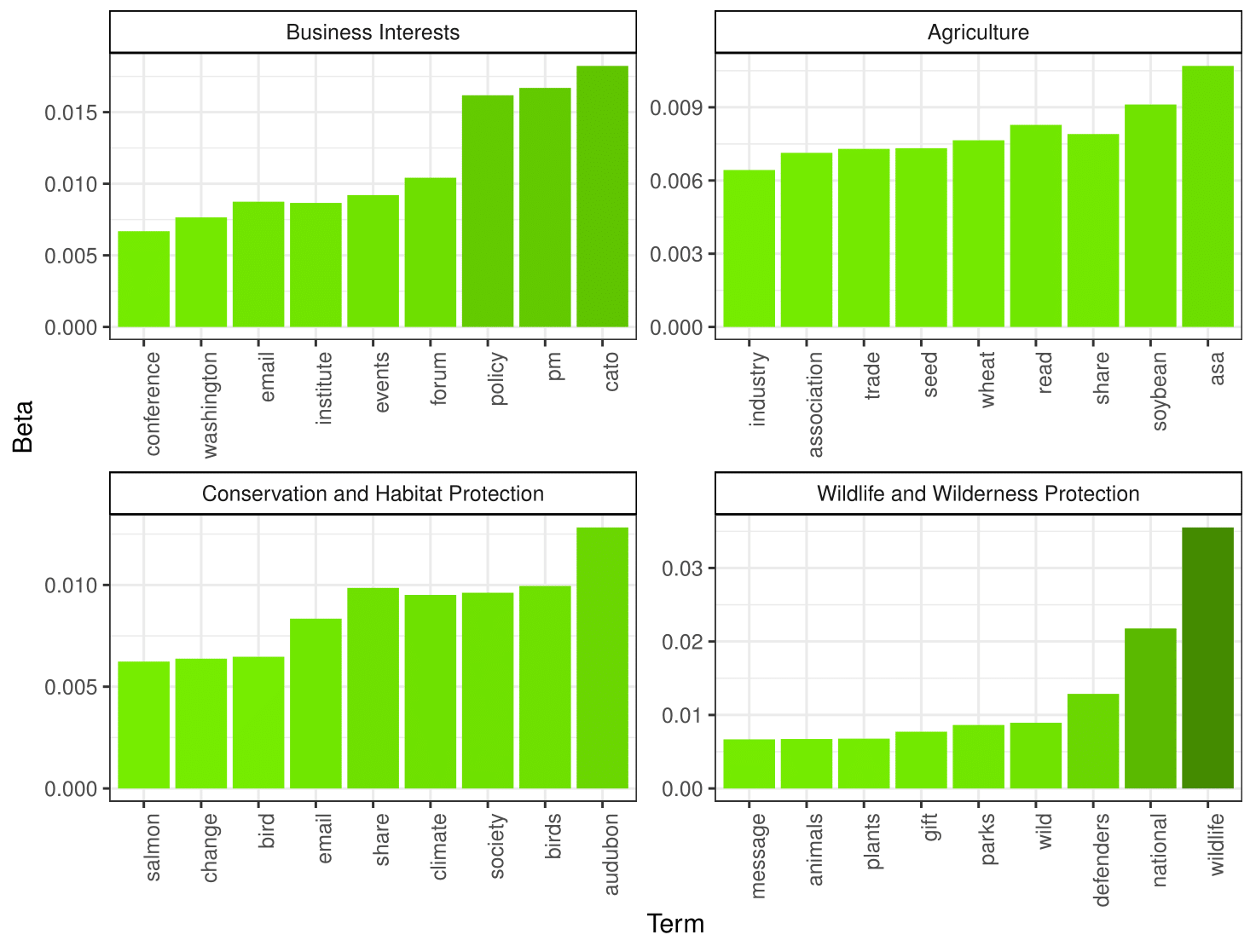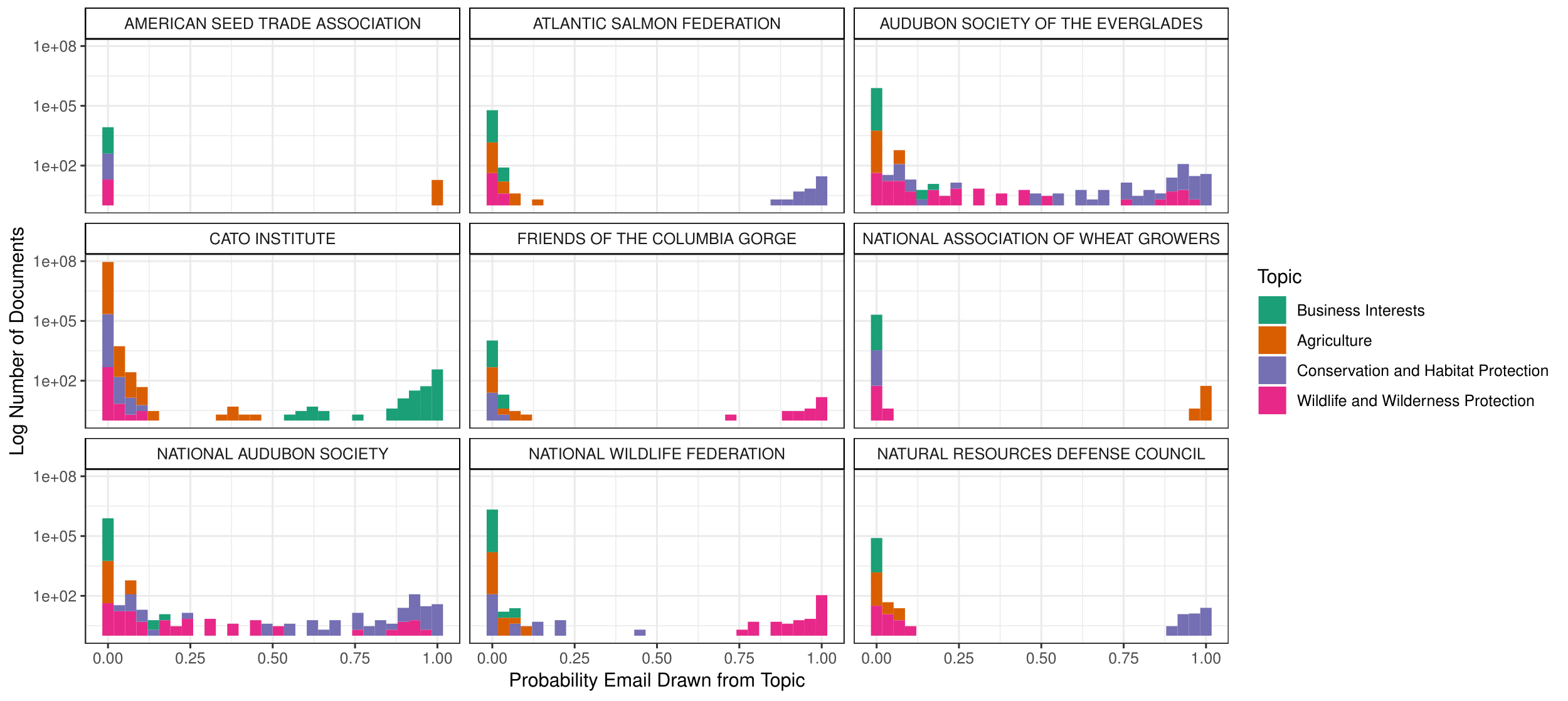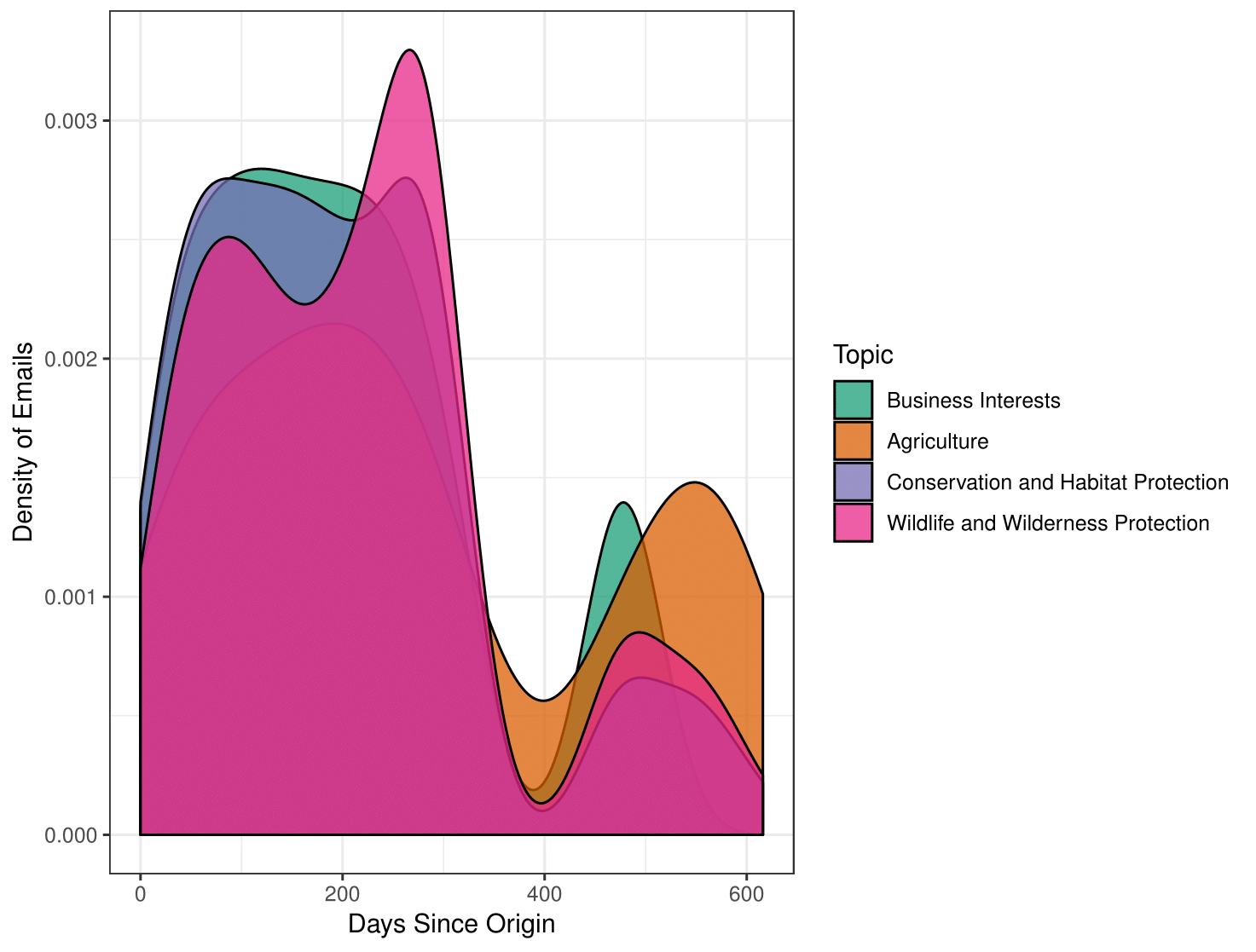A great deal is known about how interest groups lobby the government. Some of my earliest research examined the roles interest groups adopt when collectively lobbying the courts. Yet, we know relatively little about the other avenues through which interest groups influence the world. This problem motivated a team of us at Ohio State to examine the grassroots-level lobbying from interest groups.
This team, comprised of Prof. Jan Box-Steffensmeier, Seth Walker, Dalton Flanagan, and myself, examined a variety of questions related to grassroots lobbying. We began by developing a set of email addresses, and with each email address we registered for one interest group’s listserv. If an email address started getting emails from an interest group other than the one it was assigned to, we could identify that the interest groups had shared their listservs. These accounts collected emails between February 2015 and November 2016. While the primary motive of the project was to detect coalitions of interest groups that assisted one another in lobbying the public, a question that intrigued me was what interest groups discussed when lobbying the public. What could we learn from almost two years of emails sent from interest groups? Were these messages on brand? Were they highly responsive to certain agenda setting events?
I sought to answer these questions using a set of 1,864 emails sent by 22 groups. These groups had previously lobbied the United States courts over environmental issues. To learn about the topics discussed, I fit a Latent Dirichlet Allocation (LDA) with 4 topics (while there are much more principled ways to select the number of topics, I wanted to keep a small number to help in interpretation).
From this analysis, we effectively learn that groups lobby over specialized issues related to their broader mission. While this is not surprising, what is surprising is that the timing of these emails does not seem to vary according to the topic. This question of timing could mean several things. Interest groups could all respond to the same agenda setting events, but tailor their discussion of the event to their message. Alternatively, they may not be particularly moved to respond to events and may all have common communication cycles
The preceding figure shows the breakdown of topics uncovered through LDA. I have labeled these clusters according to semantic coherence and the common denominator for the most common words populating the topic. A set of emails appear to relate to issues of interest to business. This first topic includes words that largely refer to the Cato Institute, a well-known Libertarian think tank that often pushes back against environmental regulations.
Another topic appears that consists of words related to agriculture, such as trade, wheat, and soybean. This certainly makes sense as oftentimes agricultural-based interest groups find themselves involved in environmental cases (e.g. land use, irrigation and water use, pesticide/fertilizer usage).
The last two topics are consistent with what one might expect to be present in environmental interest groups’ emails. Some groups seem to send emails reflecting a topic covering conservation and habitat protection. Others seem to send emails reflecting a topic covering wildlife and wilderness protection. The former topic consists of many core words, such as birds, climate, and salmon. In addition, the National Audubon Society appears to be largely affiliated with this topic. The latter topic includes many words covering protection of national parks.
The prior image shows the topic assignment probabilities per email per a handful of interest groups. The takeaway is that often times these interest groups, more often than not, predominantly send emails associated with certain topics. These email-topic-group relationships are often fairly intuitive. For example, unsurprisingly, the American Seed Trade Association tends to send emails associated with the agricultural topic more often than any other topic. Additionally, while often sending emails associated with the wildlife and wilderness protection topic, the National Audubon Society and the Audubon Society of the Everglades tend more frequently to send emails associated with conservation and habitat protection.
Counterintuitively, however, the timing of emails does not appear to vary significantly by topic. We might expect that certain groups would ramp up their messaging in response to particular agenda setting events. However, these groups have relatively uniform timing with respect to outgoing emails. This might indicate that groups, regardless of broader objective, still respond to national agenda setting events, perhaps by tailoring their message. Alternatively, it might mean that these groups are not responsive to these events and have common cycles for sending out emails, either for advocacy or solicitation.






